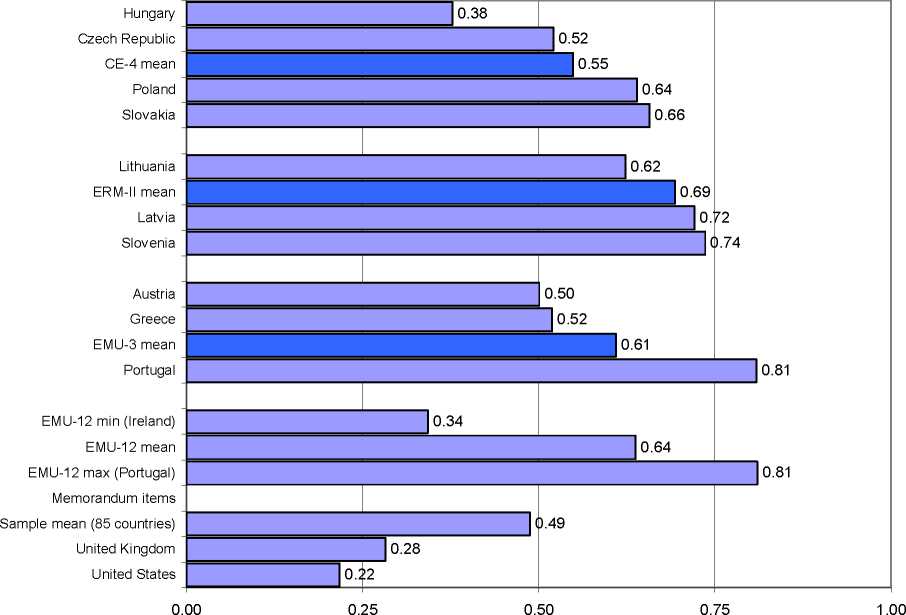Aggregate Wage Flexibility in Selected New EU Member States 19
No significant wage adjustment was found for Hungary during 1992-1999. Covering a larger set
of countries over the period 1993-2003, von Hagen and Traistaru-Siedschlag (2005) obtain
regional wage elasticity of -0.15 for the Baltic countries, -0.06 for Slovakia, insignificant for the
Czech Republic and Poland, and even positive for Hungary (0.15) and Slovenia (0.56) which
indicates a sort of hysteresis (regions with higher unemployment are characterized by higher
wages, the phenomenon known as “compensating differential”). Summarizing, wage flexibility at
the regional level in the eight East European NMS does not appear to be higher than in other
developed nations.
A complementary comparison of wage flexibility across countries could be done based on
institutional characteristics of labor markets. Botero et al. (2004) construct aggregate indices of
labor market rigidity (“regulation of labor”) across 85 industrialized and developing countries for
the late 1990s. The underlying indicator of protection of employed workers is the closest proxy
for micro-economic wage flexibility. Indeed, this indicator is based on assessing the cost of
increasing hours worked and the cost of firing, and it takes into account dismissal procedures and
alternative employment contract practices. These characteristics are determinants of the
(downward) wage flexibility at the microeconomic level, since the more protected workers are,
the less willing they are to accept wage decreases.
Figure 5: Indices of Labor Market Rigidity (0-low, 1-high)

Source: Botero et al. (2004)
Note: Higher indices mean higher labor market rigidity.
Figure 5 illustrates indices of labor market rigidity. The data are available for all the countries of
our sample except Estonia. Overall, the CE-4, the ERM-II participants and the EMU-3 have quite
high rigidities of comparable magnitude (the corresponding averages are 0.55, 0.69, and 0.61),
More intriguing information
1. Non-farm businesses local economic integration level: the case of six Portuguese small and medium-sized Markettowns• - a sector approach2. Examining Variations of Prominent Features in Genre Classification
3. Smith and Rawls Share a Room
4. The name is absent
5. The Clustering of Financial Services in London*
6. Midwest prospects and the new economy
7. Managing Human Resources in Higher Education: The Implications of a Diversifying Workforce
8. Word searches: on the use of verbal and non-verbal resources during classroom talk
9. Policy Formulation, Implementation and Feedback in EU Merger Control
10. Sex-gender-sexuality: how sex, gender, and sexuality constellations are constituted in secondary schools